B1992
On this page, you find all documents, package deals, and flashcards offered by seller B1992.
- 30
- 0
- 1
Community
- Followers
- Following
31 items

module 83 pretest
module 83 pretest, questions and answers
- Exam (elaborations)
- • 0 pages •
module 83 pretest, questions and answers

Mother tongue Amy Tan essay questions
Answer the questions below. Use the essay for support of your answers. You can use small quotes. (less than 10 words) You should introduce your evidence by saying, in the essay Tan says, whether you use a small quote or you paraphrase. To paraphrase is to put the information into your own words. You should use both in the response. Both need an in text citation. The in text citation which is the author’s last name.
- Other
- • 1 pages •
Answer the questions below. Use the essay for support of your answers. You can use small quotes. (less than 10 words) You should introduce your evidence by saying, in the essay Tan says, whether you use a small quote or you paraphrase. To paraphrase is to put the information into your own words. You should use both in the response. Both need an in text citation. The in text citation which is the author’s last name.
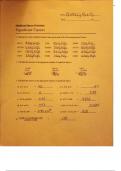
sig figs
The fundamental concepts of inorganic chemistry including the physical and chemical properties of matter, atomic structure, chemical bonding, stoichiometry, the gas laws, solutions, acids and bases, redox reactions, and chemical equilibria.
- Other
- • 4 pages •
The fundamental concepts of inorganic chemistry including the physical and chemical properties of matter, atomic structure, chemical bonding, stoichiometry, the gas laws, solutions, acids and bases, redox reactions, and chemical equilibria.
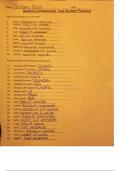
naming compounds
The fundamental concepts of inorganic chemistry including the physical and chemical properties of matter, atomic structure, chemical bonding, stoichiometry, the gas laws, solutions, acids and bases, redox reactions, and chemical equilibria.
- Other
- • 3 pages •
The fundamental concepts of inorganic chemistry including the physical and chemical properties of matter, atomic structure, chemical bonding, stoichiometry, the gas laws, solutions, acids and bases, redox reactions, and chemical equilibria.
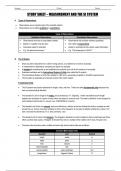
study sheet
The fundamental concepts of inorganic chemistry including the physical and chemical properties of matter, atomic structure, chemical bonding, stoichiometry, the gas laws, solutions, acids and bases, redox reactions, and chemical equilibria.
- Other
- • 8 pages •
The fundamental concepts of inorganic chemistry including the physical and chemical properties of matter, atomic structure, chemical bonding, stoichiometry, the gas laws, solutions, acids and bases, redox reactions, and chemical equilibria.
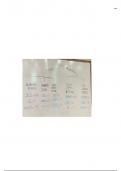
sig figs
The fundamental concepts of inorganic chemistry including the physical and chemical properties of matter, atomic structure, chemical bonding, stoichiometry, the gas laws, solutions, acids and bases, redox reactions, and chemical equilibria.
- Other
- • 1 pages •
The fundamental concepts of inorganic chemistry including the physical and chemical properties of matter, atomic structure, chemical bonding, stoichiometry, the gas laws, solutions, acids and bases, redox reactions, and chemical equilibria.

safety and lab
The fundamental concepts of inorganic chemistry including the physical and chemical properties of matter, atomic structure, chemical bonding, stoichiometry, the gas laws, solutions, acids and bases, redox reactions, and chemical equilibria.
- Other
- • 11 pages •
The fundamental concepts of inorganic chemistry including the physical and chemical properties of matter, atomic structure, chemical bonding, stoichiometry, the gas laws, solutions, acids and bases, redox reactions, and chemical equilibria.
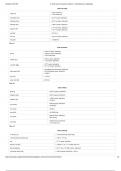
units and conversions
The fundamental concepts of inorganic chemistry including the physical and chemical properties of matter, atomic structure, chemical bonding, stoichiometry, the gas laws, solutions, acids and bases, redox reactions, and chemical equilibria.
- Other
- • 2 pages •
The fundamental concepts of inorganic chemistry including the physical and chemical properties of matter, atomic structure, chemical bonding, stoichiometry, the gas laws, solutions, acids and bases, redox reactions, and chemical equilibria.
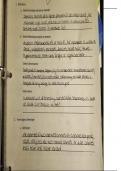
biology final exam
A study of the cell, the fundamental unit of biological structure and function. An introductory section on bioenergetics and biochemistry lay the groundwork for the consideration of the cell through a modern interdisciplinary approach. The course examines the ultrastructure of the cell and of the most universal cell functions: transport, cellular respiration, photosynthesis, cellular reproduction, and protein synthesis.
- Exam (elaborations)
- • 3 pages •
A study of the cell, the fundamental unit of biological structure and function. An introductory section on bioenergetics and biochemistry lay the groundwork for the consideration of the cell through a modern interdisciplinary approach. The course examines the ultrastructure of the cell and of the most universal cell functions: transport, cellular respiration, photosynthesis, cellular reproduction, and protein synthesis.
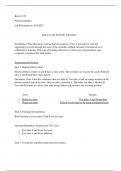
report on the scientific laboratory
A study of the cell, the fundamental unit of biological structure and function. An introductory section on bioenergetics and biochemistry lay the groundwork for the consideration of the cell through a modern interdisciplinary approach. The course examines the ultrastructure of the cell and of the most universal cell functions: transport, cellular respiration, photosynthesis, cellular reproduction, and protein synthesis.
- Other
- • 2 pages •
A study of the cell, the fundamental unit of biological structure and function. An introductory section on bioenergetics and biochemistry lay the groundwork for the consideration of the cell through a modern interdisciplinary approach. The course examines the ultrastructure of the cell and of the most universal cell functions: transport, cellular respiration, photosynthesis, cellular reproduction, and protein synthesis.
